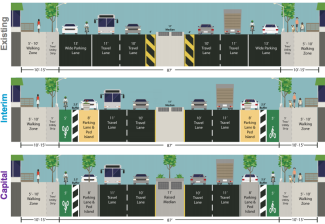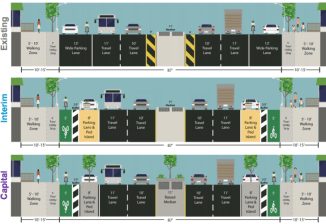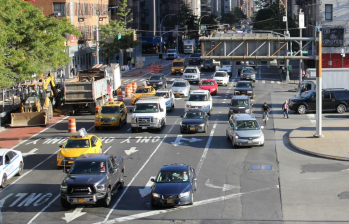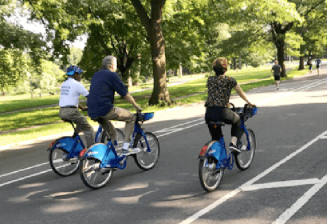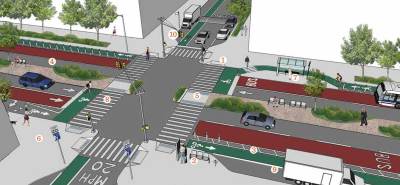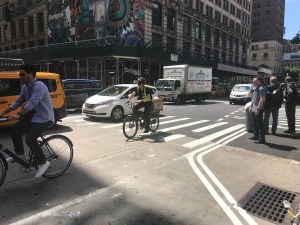If de Blasio Is Serious About Vision Zero, 4th Ave Will Get a Protected Bike Lane
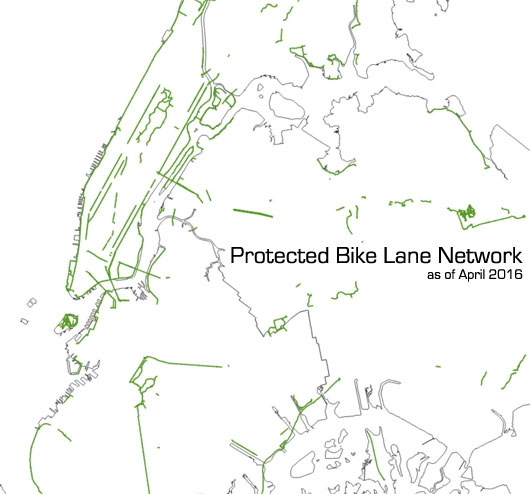
After traffic fatalities fell during the first two years of the de Blasio administration, this year New York is not making progress toward the Vision Zero goal of eliminating traffic deaths. Will City Hall be more committed next year to ambitious street redesigns that save lives?
An early litmus test will be Fourth Avenue in Brooklyn — which is ripe for a protected bike lane but is currently in line for much more modest changes from NYC DOT. If the mayor is serious about Vision Zero, Fourth Avenue will get protected bike lanes, which will deliver the more effective safety overhaul.

Fourth Avenue is scheduled for an upcoming capital construction project, one that de Blasio has touted under the umbrella of his “Vision Zero Great Streets” initiative. But the design that’s currently on the table won’t do much besides cast the current layout of Fourth Avenue in concrete, raising what are now painted medians a few inches above street level.
Recently, responding to increase in pedestrian and cyclist fatalities this year, de Blasio has insisted that Vision Zero is “still in its infancy” and that there’s “no lack” of funding or will to redesign streets as safely as possible.
If that’s the case, then a protected bike lane on Fourth Avenue must be a City Hall priority. Data from other protected bike lane projects indicates that they lead to a significant reduction in injuries for all users — including pedestrians and drivers.
For pedestrians, a protected bikeway would do more to narrow the longest crossing distances on Fourth Avenue, and it would provide more opportunities for concrete refuges.
For cyclists, Fourth Avenue is the ideal street for a north-south protected bike lane connecting Bay Ridge, Sunset Park, Park Slope and downtown. This would do wonders for the bike network and improve access to safe bikeways in neighborhoods that sorely lack it now.
If the de Blasio administration moves forward as planned with the current design, however, it would forestall a bike lane on Fourth Avenue for decades.
“Once they lay that concrete, if nothing happens, if momentum proves to be the strongest thing here, then we will never see a bike lane on Fourth Avenue,” Council Member Carlos Menchaca told Streetsblog in August.
That leaves a few months for DOT to adapt, change course, and pursue a project that includes protected bike lanes. A city that’s truly committed to Vision Zero will recognize the necessity of committing to the safest possible designs for walking and biking on big arterial streets like Fourth Avenue.

